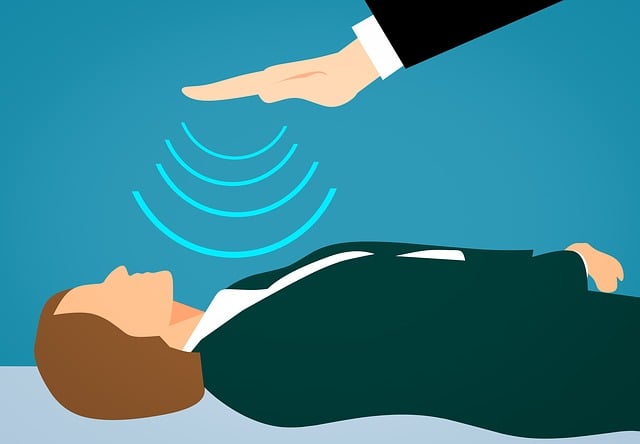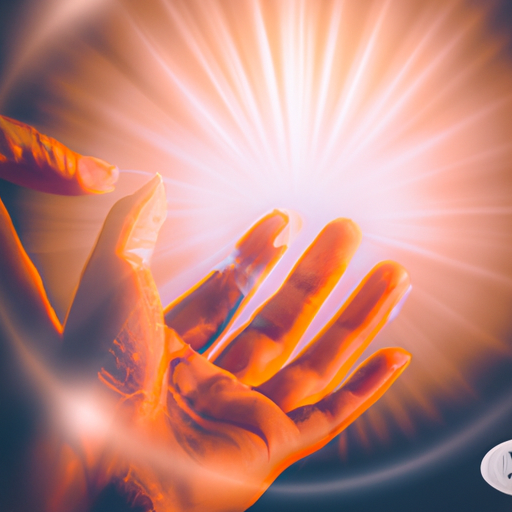
Are you curious about how Reiki healing works? Reiki, an ancient Japanese healing technique, has gained popularity in recent years for its ability to promote relaxation and balance in the body. Many people who have experienced Reiki sessions rave about its ability to reduce stress, promote emotional well-being, and enhance physical healing. In this article, we will delve into the details of how Reiki healing works and explore the different aspects of this holistic practice. So, if you’ve ever wondered how Reiki can benefit you, read on to discover more!
In Reiki healing, practitioners believe that there is a vital life force energy that flows through all living beings. This energy, known as “ki” in Japanese or “chi” in Chinese, is responsible for maintaining a state of health and balance. However, factors like stress, emotional turmoil, and physical ailments can disrupt the flow of this energy, leading to imbalances and disease. Reiki healers aim to restore and rebalance this life force energy by channeling it through their hands and directing it towards the recipient. By doing so, they believe that Reiki can address the root causes of illnesses or imbalances and facilitate the body’s natural healing ability. In the upcoming sections, we will explore the different techniques and principles behind Reiki healing in more detail, allowing you to gain a deeper understanding of its potential benefits. So, keep reading to discover how Reiki may bring healing and harmony into your life.

What is Reiki healing?
Reiki healing is a form of alternative therapy that originated in Japan. It is a holistic practice that aims to promote healing and balance in the body, mind, and spirit. Reiki utilizes the concept of life force energy, which is believed to flow through every living being. By balancing and channeling this energy, Reiki practitioners can help address physical, emotional, and spiritual imbalances.
Definition and origins of Reiki
The word “Reiki” is derived from two Japanese words: “rei,” meaning universal, and “ki,” meaning life force energy. Reiki was developed in the early 20th century by Mikao Usui, a Japanese Buddhist monk. Usui reportedly discovered the art of Reiki healing after a period of meditation and fasting on Mount Kurama.
Principles of Reiki healing
The principles of Reiki healing are rooted in the belief that energy imbalances lead to physical and emotional ailments. By addressing these imbalances, Reiki aims to stimulate the body’s natural healing abilities and restore overall well-being. The five principles of Reiki, known as the Reiki principles or Reiki precepts, are as follows:
- Just for today, I will not be angry.
- Just for today, I will not worry.
- Just for today, I will be grateful.
- Just for today, I will do my work honestly.
- Just for today, I will be kind to every living thing.
These principles serve as a guide for living a balanced and harmonious life.
Understanding the energy in Reiki
Concept of life force energy
At the core of Reiki healing is the concept of life force energy, also known as “ki” or “chi.” This energy is believed to flow through the body, nourishing organs, tissues, and cells. When the flow of ki is obstructed or imbalanced, it can manifest as physical or emotional issues. Reiki practitioners aim to restore the balance of ki and promote healing.
How energy affects the body
Energy imbalances can impact the body in various ways. When the flow of ki is disrupted, it can cause physical symptoms such as pain, fatigue, or illness. Similarly, emotional or mental stress can also affect the energy flow, leading to imbalances in the body. By addressing these imbalances, Reiki can help alleviate physical and emotional symptoms.
Balancing and channeling energy in Reiki
During a Reiki session, the practitioner acts as a channel for the universal life force energy. They use specific hand positions to transfer energy to the recipient, either by placing their hands on or slightly above the body. The energy is believed to flow through the practitioner’s hands and into the recipient, promoting relaxation, healing, and balance.
The process of Reiki healing
Preparation for a Reiki session
Before a Reiki session, it is important to create a calm and peaceful environment. The recipient typically lies down on a massage table or sits in a comfortable chair. It is recommended to wear loose, comfortable clothing during the session. The practitioner may also prepare by mentally focusing and setting intentions for the healing session.
Hand positions and techniques used in Reiki
During a Reiki session, the practitioner uses specific hand positions to channel energy into the recipient’s body. These hand positions typically cover areas such as the head, chest, stomach, back, arms, and legs. The practitioner may hold their hands in each position for several minutes, allowing the energy to flow and facilitate healing.
Flow of energy during a Reiki session
During a Reiki session, the energy flows from the practitioner’s hands into the recipient’s body. The recipient may feel sensations such as warmth, tingling, or a sense of deep relaxation. The energy works to rebalance and restore the recipient’s energy field, promoting a state of harmony and well-being.
Benefits of Reiki healing
Physical benefits of Reiki
Reiki healing has been reported to provide various physical benefits. These may include pain relief, reduced inflammation, improved immune function, and enhanced relaxation. Reiki can also support the body’s natural healing processes and help alleviate symptoms of chronic conditions.
Mental and emotional benefits of Reiki
In addition to physical benefits, Reiki healing also offers mental and emotional benefits. Many recipients report feeling a sense of calm, reduced stress and anxiety, improved mental clarity, and enhanced emotional well-being. Reiki can provide a safe space for emotional release and promote overall mental and emotional balance.

Scientific perspective on Reiki healing
Exploring the research on Reiki
While Reiki healing is considered a complementary therapy, there is ongoing research exploring its effectiveness. Some studies have shown positive results, suggesting that Reiki may have beneficial effects on pain management, stress reduction, and overall well-being. However, more research is needed to fully understand the mechanisms and potential benefits of Reiki healing.
Understanding the placebo effect in Reiki studies
Some skeptics argue that the effects of Reiki healing may be attributed to the placebo effect, where the recipient experiences improvements simply because they believe in the treatment. While the placebo effect cannot be ruled out, many recipients of Reiki have reported tangible, positive outcomes that go beyond placebo responses. Nevertheless, it is important to approach Reiki and other complementary therapies with an open mind and a willingness to explore their potential benefits.
Receiving Reiki healing
What to expect during a Reiki session
During a Reiki session, you can expect to feel relaxed and at ease. The practitioner will use gentle touch or non-contact hand positions to channel energy into your body. You may experience sensations such as warmth, tingling, or a sense of deep relaxation. It is common to enter a meditative state during the session, allowing the energy to flow and facilitate healing.
Finding a qualified Reiki practitioner
When seeking a Reiki practitioner, it is important to find someone who is properly trained and certified. Look for practitioners who have completed reputable Reiki training programs and have a good understanding of the principles and techniques of Reiki healing. Personal recommendations and checking credentials can help you find a qualified practitioner who best meets your needs.

Learning Reiki healing
Becoming a Reiki practitioner
If you are interested in becoming a Reiki practitioner yourself, you can undergo Reiki training. Reiki training typically consists of several levels, starting with the beginner level and progressing to advanced levels. Each level involves attunements, which are energetic empowerments that enhance your ability to channel Reiki energy. With each level, you acquire additional knowledge and techniques to support your healing practice.
Different levels of Reiki training
The different levels of Reiki training include the first degree (Reiki I), second degree (Reiki II), and master/teacher level. At each level, you deepen your understanding of Reiki principles, learn additional hand positions and techniques, and expand your ability to channel energy. The master/teacher level allows you to teach and attune others to Reiki.
Incorporating Reiki into daily life
Using Reiki for self-healing
One of the powerful aspects of Reiki is its ability to be used for self-healing. By learning Reiki, you can practice Reiki on yourself whenever you need it. This can help promote your own physical, mental, and emotional well-being. Regular self-Reiki sessions can be integrated into your daily routine, allowing you to tap into the healing energy whenever you feel the need.
Using Reiki for stress reduction and relaxation
Reiki can also be used as a powerful tool for stress reduction and relaxation. By practicing Reiki regularly, you can help calm your mind, release tension, and restore a sense of balance and calm. Whether it’s through self-Reiki or receiving Reiki from a practitioner, incorporating Reiki into your daily life can provide a valuable outlet for stress relief and promote overall relaxation.

Reiki healing for specific conditions
Reiki for pain management
Reiki healing has been found to have positive effects in managing pain. By promoting relaxation and balancing the body’s energy, Reiki can help reduce pain levels and alleviate discomfort. Many individuals with chronic pain conditions have reported improvements in pain management and overall well-being after receiving Reiki treatments.
Reiki for anxiety and depression
Reiki can also be beneficial for individuals struggling with anxiety and depression. It can help calm the mind, reduce feelings of anxiety and stress, and promote emotional well-being. Reiki sessions can provide a safe and supportive space for emotional release and healing, offering an alternative or complementary approach to traditional therapies for anxiety and depression.
Reiki for insomnia
If you struggle with insomnia or have difficulty falling asleep, Reiki healing can provide a natural and gentle solution. By promoting relaxation and balancing the body’s energy, Reiki can help calm the mind and create a state of deep relaxation, making it easier to achieve restful sleep. Regular Reiki sessions can support healthy sleep patterns and improve overall sleep quality.
Reiki for fertility
Reiki healing may also be beneficial for individuals or couples seeking assistance with fertility. By addressing energy imbalances and promoting overall well-being, Reiki can support the body’s natural fertility processes. Reiki sessions can help reduce stress levels, enhance relaxation, and create a supportive environment for conception and pregnancy.
Conclusion
Reiki healing offers a holistic approach to health and well-being, addressing both physical and emotional imbalances. By harnessing the power of life force energy, Reiki practitioners aim to restore harmony and promote healing in the body, mind, and spirit. Incorporating Reiki into daily life can provide numerous benefits, including stress reduction, pain management, and enhanced overall well-being. Whether you choose to receive Reiki treatments or explore becoming a practitioner yourself, Reiki offers a gentle and supportive path to personal growth and improved quality of life. Embrace the opportunity to explore Reiki healing and discover its transformative possibilities for yourself.











